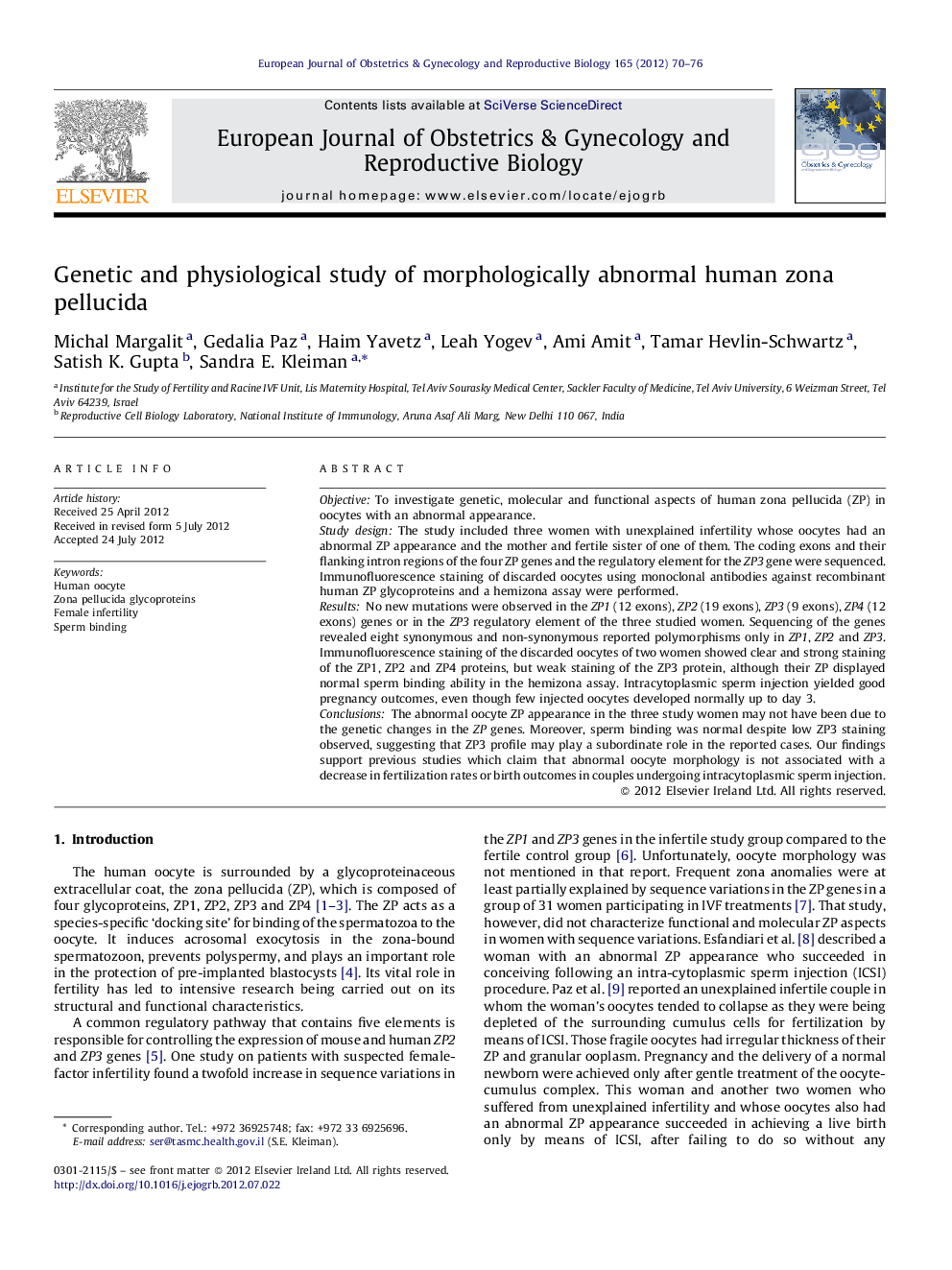| Article ID | Journal | Published Year | Pages | File Type |
|---|---|---|---|---|
| 3920254 | European Journal of Obstetrics & Gynecology and Reproductive Biology | 2012 | 7 Pages |
ObjectiveTo investigate genetic, molecular and functional aspects of human zona pellucida (ZP) in oocytes with an abnormal appearance.Study designThe study included three women with unexplained infertility whose oocytes had an abnormal ZP appearance and the mother and fertile sister of one of them. The coding exons and their flanking intron regions of the four ZP genes and the regulatory element for the ZP3 gene were sequenced. Immunofluorescence staining of discarded oocytes using monoclonal antibodies against recombinant human ZP glycoproteins and a hemizona assay were performed.ResultsNo new mutations were observed in the ZP1 (12 exons), ZP2 (19 exons), ZP3 (9 exons), ZP4 (12 exons) genes or in the ZP3 regulatory element of the three studied women. Sequencing of the genes revealed eight synonymous and non-synonymous reported polymorphisms only in ZP1, ZP2 and ZP3. Immunofluorescence staining of the discarded oocytes of two women showed clear and strong staining of the ZP1, ZP2 and ZP4 proteins, but weak staining of the ZP3 protein, although their ZP displayed normal sperm binding ability in the hemizona assay. Intracytoplasmic sperm injection yielded good pregnancy outcomes, even though few injected oocytes developed normally up to day 3.ConclusionsThe abnormal oocyte ZP appearance in the three study women may not have been due to the genetic changes in the ZP genes. Moreover, sperm binding was normal despite low ZP3 staining observed, suggesting that ZP3 profile may play a subordinate role in the reported cases. Our findings support previous studies which claim that abnormal oocyte morphology is not associated with a decrease in fertilization rates or birth outcomes in couples undergoing intracytoplasmic sperm injection.
